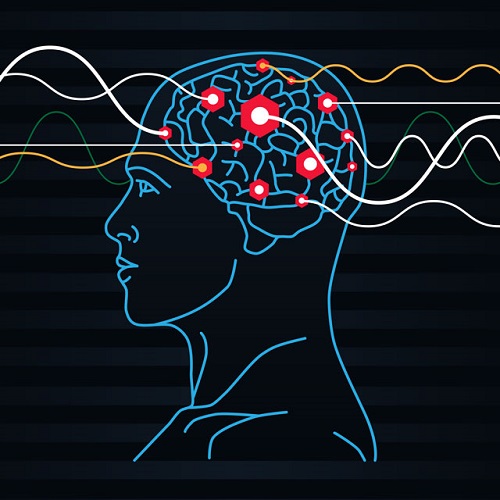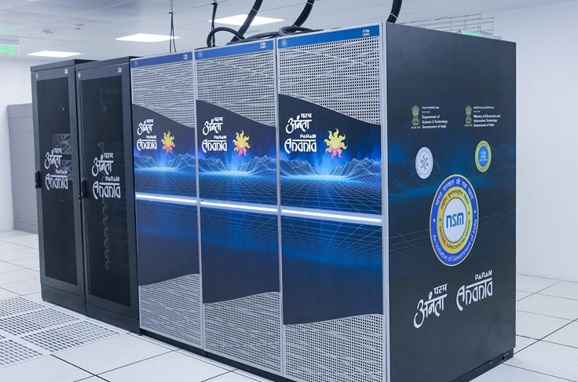
[Image courtesy: Johns Hopkins Medicine]
According to the latest World Health Organisation (WHO) data, nearly one billion people worldwide suffer from some form of mental disorder. Cases of anxiety and depression rose many folds amid the COVID-19 pandemic. Electroconvulsive therapy (ECT), where defined amounts of current are passed through specific brain regions, is known to provide substantial relief to patients with treatment-resistant depression, including suicidal ideation, among other symptoms.
A team of researchers from the Department of Biological Sciences, Tata Institute of Fundamental Research (TIFR), Mumbai, has conducted a study using both young adult and middle-aged rats to see whether the effects of the chronic electroconvulsive seizure (ECS) on neuroplasticity, the ability to generate new neurons, and the modulation of the extracellular matrix are similar at both ages.
“Patients with depressive symptoms who are resistant to all forms of drug therapy are often administered ECT for relief. Mechanisms of action through which ECT exerts its beneficial effects remain poorly understood. To understand how ECT works we have used rodent models and the chronic ECS paradigm,” say the researchers while talking to India Science Wire.
Given that ECT is often administered both to middle aged and geriatric patients, it is still not known whether the effects of ECS are similar at different ages. The researchers found that chronic ECS produces both unique as well as overlapping effects of neuronal plasticity in the hippocampi of both young adult and middle aged rats.
Depression can manifest at any stage in one’s life. In geriatric depression (depression in aged people), the patients present significant challenges to regular antidepressant medication or treatment paradigms due to comorbid conditions like diabetes, hypertension, and other age-related conditions. Also, many geriatric patients become resistant to conventional treatment strategies.
According to the latest World Health Organisation (WHO) data, nearly one billion people worldwide suffer from some form of mental disorder. Cases of anxiety and depression rose many folds amid the COVID-19 pandemic. Electroconvulsive therapy (ECT), where defined amounts of current are passed through specific brain regions, is known to provide substantial relief to patients with treatment-resistant depression, including suicidal ideation, among other symptoms.

In developing and developed countries, the demography is changing where older and aging individuals form a significant chunk, thanks to advances in modern medicine. At the same time, this presents other challenges where neurodegenerative diseases are rising and new treatment strategies are needed.
ECT has been shown to be equally effective in geriatric patients and is often the preferred choice in treatment-resistant geriatric depression. “Given these facts, it becomes pertinent to ask whether mechanisms attributed to ECT action on the brain operate similarly in an aged context and we set out to explore this question,” researchers explain.
The study team has found that chronic ECS reduces behavioural despair at both ages examined. These behavioural effects of chronic ECS were observed along with similar changes in trophic factor expression and in the generation of new-born neurons in the hippocampus, though the magnitude of the effects was different between the ages studied.
“We also found that chronic ECS results in the stripping off of Perineuronal nets (PNNs) which are protein-sugar linkages that decorate specific neurons within the hippocampus. This is exciting as removal of PNNs is associated with increased neuronal plasticity allowing for stable and mature neuronal networks to incorporate changes that might be relevant to bringing about improvement in mood,” research team further elucidate.
In their study, the researchers exposed young adult and middle-aged Sprague Dawley rats to chronic ECS for seven consecutive days, following which quantitative polymerase chain reaction analysis was used to profile gene expression, and immunohistochemistry and immunofluorescence approaches paired with confocal microscopy were used to analyse changes in neural stem cells and PNNs.
“Our findings indicate that age is a key variable in determining the nature of chronic ECS-evoked molecular and cellular changes in the hippocampus. This raises the intriguing possibility that chronic ECS may recruit distinct, as well as overlapping, mechanisms to drive antidepressant-like behavioural changes in an age-dependent manner,” researchers note.
The team also believes that preclinical studies should also consider factors such as age, life history, sex, comorbid conditions, etc. Only then can a full-fledged understanding of how chronic ECS exerts effects on specific neural circuits can be obtained. This is important for getting a deeper understanding of the actions of ECT.
The research team comprises Minal Jaggar, Shreya Ghosh, Balaganesh Janakiraman, Ashmita Chatterjee, Megha Maheshwari, Vani Dewan, Brendan Hare, Sukrita Deb, Dwight Figueiredo, Ronald S Duman (Yale University School of Medicine, USA), and Vidita A Vaidya. The study has been published in the International Journal of Neuropsychopharmacology.
India Science Wire
ISW/SM/TIFR/ECT/Eng/16/03/2023





